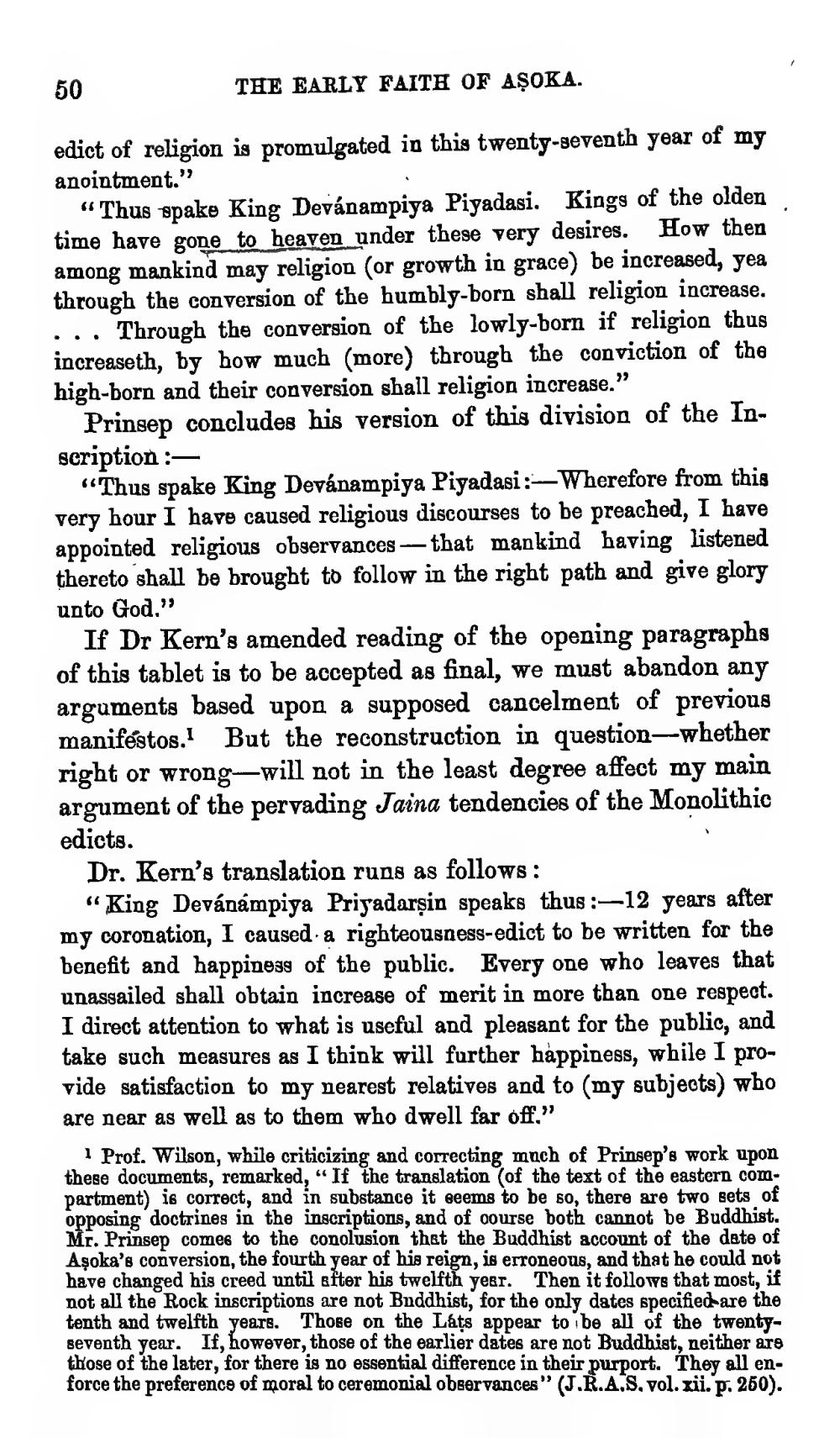________________
50
THE EARLY FAITH OF AŞOKA.
edict of religion is promulgated in this twenty-seventh year of my anointment."
"Thus spake King Devánampiya Piyadasi. Kings of the olden time have gone to heaven under these very desires. How then among mankind may religion (or growth in grace) be increased, yea through the conversion of the humbly-born shall religion increase. ... Through the conversion of the lowly-born if religion thus increaseth, by how much (more) through the conviction of the high-born and their conversion shall religion increase.”
Prinsep concludes his version of this division of the Inscription :
“Thus spake King Devánampiya Piyadasi :- Wherefore from this very hour I have caused religious discourses to be preached, I have appointed religious observances — that mankind having listened thereto shall be brought to follow in the right path and give glory unto God."
If Dr Kern's amended reading of the opening paragraphs of this tablet is to be accepted as final, we must abandon any arguments based upon a supposed cancelment of previous manifestos. But the reconstruction in question-whether right or wrong-will not in the least degree affect my main argument of the pervading Jaina tendencies of the Monolithic edicts.
Dr. Kern's translation runs as follows:
“King Devánampiya Priyadarşin speaks thus : 12 years after my coronation, I caused a righteousness-edict to be written for the benefit and happiness of the public. Every one who leaves that unassailed shall obtain increase of merit in more than one respect. I direct attention to what is useful and pleasant for the public, and take such measures as I think will further håppiness, while I provide satisfaction to my nearest relatives and to (my subjects) who are near as well as to them who dwell far off.”
1 Prof. Wilson, while criticizing and correcting much of Prinsep's work upon these documents, remarked, “If the translation of the text of the eastern compartment) is correct, and in substance it seems to be so, there are two sets of opposing doctrines in the inscriptions, and of course both cannot be Buddhist. Mr. Prinsep comes to the conolusion that the Buddhist account of the date of Aşoka's conversion, the fourth year of his reign, is erroneous, and that he could not have changed his creed until after his twelfth year. Then it follows that most, if not all the Rock inscriptions are not Buddhist, for the only dates specified are the tenth and twelfth years. Those on the Láts appear to be all of the twentyseventh year. If, however, those of the earlier dates are not Buddhist, neither are those of the later, for there is no essential difference in their purport. They all enforce the preference of moral to ceremonial observances" (J.R.A.S. vol. xii. p. 260).




